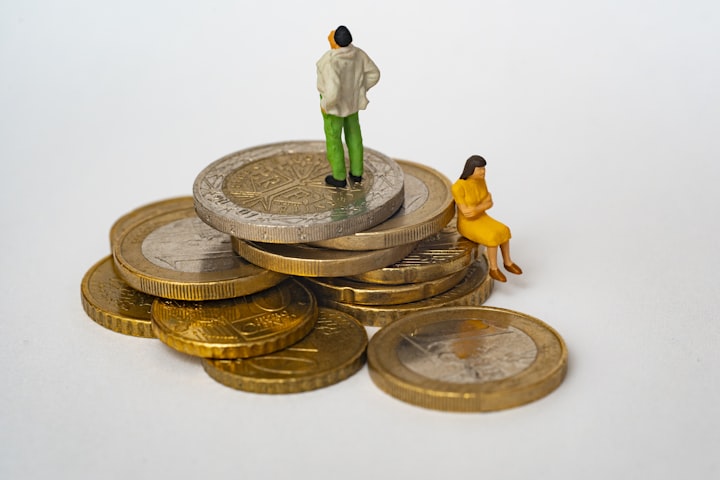Congestion in Babies — Why It Happens, Everything You Need to Know About It & How to Solve It
Your happy baby has become cranky because it’s difficult to breathe and feeding is difficult too.

Imagine how it feels as a congested adult. Your nose is stuffed up, and it’s difficult to inhale. Not only that, sleeping and eating are a challenge for you too.
Nasal congestion is as uncomfortable for your baby as it is for you, except your baby cannot tell you how they're feeling. It’s normal for babies under six months to have congestion and get sick more frequently than adults. You’ll have to step in to help your baby get rid of the blockage; it’s far too difficult for a baby to accomplish this on their own.
Since babies often get stuffed up, you’ll need to know what to do when it happens and know how to identify when medical attention is necessary. This article will show you different methods to handle your baby’s congestion and the materials you’ll need.
What is infant congestion and what causes it?
Your baby naturally produces mucus so that moist air can enter the lungs. Mucus can block the airway partially and lead to a stuffy nose. Congestion is likely a symptom of illnesses such as the flu or a cold.
Babies have difficulty getting rid of mucus on their own, and this results in the breathing sounds you hear. Usually, infant congestion is a regular occurrence, but there are some instances when congestion requires further medical attention.
If you feel that your child has an illness, reach out to a doctor immediately.
Causes of Baby Congestion
Infants that are two months or younger rely heavily on nasal breathing. Babies have small nostrils which make breathing difficult if they are congested. It is not uncommon for a baby to get sick up to ten times within their first two years of life.`
Colds and Flu
There are more than 200 types of cold viruses; a cold is usually the culprit behind infant congestion. Colds increase mucus formation and inflame the nasal lining. The blocked flow of air causes nasal congestion.
Symptoms of the flu are similar to a cold but with the addition of a fever. In some cases, the baby is expressing congestion as a symptom of the flu or a cold, according to MemorialCare Orange Coast Medical Center pediatrician, Gina Posner, MD. Posner has stated that infection usually causes infant congestion.
Sinusitis or Sinus Infection
Dark, thick mucus occurs as a result of sinusitis or a sinus infection. A sinus infection means that pathogens have gotten into the sacs filled with air located on the top and sides of the nose. Sinusitis symptoms include difficulty sleeping and eating.
Irritation
Irritation can be caused by breast milk that enters the nasal area. According to the spokesperson for American Academy of Pediatrics, Dr. Tanya Altmann, MD, any of these substances can enter the nasal cavity and later cause congestion.
Allergies
Allergies are usually not the cause of infant congestion, but this can be the case. An allergic reaction is known as hay fever or rhinitis cause excess mucus secretion. Key indicators that an allergy is causing a problem are hives, stomach pain, and diarrhea.
Additional Causes that Lead to Congestion
If your baby has enlarged tonsils, this will put pressure on the nasal passage and constrict it. Check your baby’s nostrils for polyps which can grow inside the nasal passage and interfere with breathing. Polyps are grape-like structures that form in the lining of the nose.
You should also know about Churg-Strauss Syndrome. This disease can cause asthma and inflammation in the nasal passage leading to congestion.
Check with your pediatrician and identify if asthma is the cause of your baby’s congestion. Asthma is when the airways are restricted and narrow, which makes breathing problematic.
Respiratory syncytial virus or RSV is a respiratory tract virus. It causes cold-like symptoms such as a runny nose and coughing. Let your doctor know if your baby is showing signs of dehydration and has a cough that produces gray, green, or yellow mucus.
RSV is most common in babies who are:
- Eight to ten weeks old
- Have weakened immune systems
- Born premature
- Born with lung disease or heart disease
It’s possible for a baby to stick a foreign object such as a small toy, so deep enough into the nasal cavity that the baby cannot remove the object. If the object stays in the nose long enough to rot, it can lead to an infection and congestion.
Congestion Symptoms
The most evident and visible sign of infant congestion is a constantly runny nose. It seems that every time you wipe your baby’s nose, more mucus forms. Another sign that the baby is congested is poor feeding or no feeding at all.
In this case, the baby is not taking the breast or opening their mouth to feed. A congested baby may be sluggish or drowsy. A baby with less energy does not wake as quickly as a baby that is healthy and alert.
You may hear a whistling noise every time your baby breathes. The sound will be increasingly shrill depending on how harsh the condition is.
Seek further medical attention if your baby has the following symptoms:
- Unreasonably irritated or sleepy
- Fever and congestion
- Coughing more than usual
- Loud, noisy breathing during sleep
An older infant will pick at their nose when they have enough finger dexterity — the baby cannot articulate that they have a stuffed up nose.
Solutions and Devices for Infant Congestion
When you know your baby congested, remove any and all possible allergens from the home that could be causing the problem. Dry air or substances in the air such as perfume, dust, smoke from a stove, cigar, or cigarette can lead to a stuffed up nose.
Saline Drops Over Any Medicated Drops
When a baby is congested, the first thing to do is apply two or three saline drops in each nostril, one at a time. Wait for 30 to 60 seconds before sucking out the secretions with a bulb syringe or NoseFrida. The drops will need a little time to break up the mucus.
The baby may not like this part very much and will release some of the saline drops. The saline drops can be applied two to four times a day or as needed. Once the saline drops loosen the secretions, use a nasal aspirator or bulb to pull the mucus out of the baby's nose.
Lay your baby on their back and tilt the chin back slightly before inserting the bulb. Aim the tip of the bulb that you enter into the nose towards the neck rather than upwards. Squeeze the air out of the bulb and gently insert it into the nostril, slowly suctioning out the snot.
Only perform this action a few times per day because you don’t want the nose of your little one to get irritated. There are a wide variety of nasal aspirators available ranging from the bulb type to machine-operated aspirators.
There are many battery-operated or machine aspirators made for infants, but if you feel like it's too powerful or you don't feel comfortable using it, you can use saline drops and a product like NoseFrida the Snotsucker to suction out mucus. Just before bed is a great time to use the NoseFrida.
Manual Nasal Aspirator vs. NoseFrida: The Snotsucker
Most hospitals will offer you the classic, blue manual nasal aspirator to clean out mucus from your baby’s nose. This bulb syringe or aspirator does work, but you'll have to be very careful with it. Using it too much throughout the day can irritate your baby's nasal passage.
If you do decide to use it, be sure to direct the bulb directly into the back of the nose rather than upward towards the brain. Inserting the aspirator too far up the baby’s nose can make the mucus issue worse.
This nasal aspirator can be very difficult to clean on the inside and is prone to buildup. Dispose of the bulb aspirator after a month of use. First, apply the saline drops to your baby’s nose as a preparation step so the aspirator can do its job.
To use the nasal aspirator, press on the bulb to push out all the air and then quickly insert it into the baby’s nose and release the bulb. Squeeze the contents of the bulb into a disposable towel, then rinse the inside of the bulb with warm water and soap before repeating the process.
If you find that the bulb aspirator is not the most effective, you are not alone. Many parents choose the NoseFrida as a more effective way to get rid of mucus. Plus, it can be cleaned more easily than the nasal aspirator, with warm, soapy water. Replace the filter after each use.
The main component of the NoseFrida is the transparent, filtered tube that allows you to suck out the mucus with the strength of your lungs. To use it, place the nasal end of the NoseFrida tube in the baby’s nose while sucking on the mouthpiece.
Cool Mist Humidifier Over a Warm Mist Humidifier
Get a humidifier or vaporizer for your baby to help them breathe easier during congestion. Humidifiers use ultrasonic sound to produce humidity. Although, there is another type of humidifier that passes dry air through a wet filter, increasing air moisture.
Air that is too dry causes dry sinuses and itchy skin. Take note that a humidifier does not make as much sound as a vaporizer. Cold air can worsen congestion, but the cool mist humidifier helps keep the air moist.
Moist air keeps secretions loose, making it easier to get rid of mucus. Cool mist humidifiers are safer than warm mist humidifiers. A humidifier that uses warm mist is risky because it can cause burns. The dangers of using a warm mist humidifier make it not worth using.
It's important to keep a humidifier for your baby during the fall and winter months when the air has the least humidity. When you heat your home, the humidity drops significantly. It's not hard for a young baby's skin to dry out, especially if they have eczema.
The right humidity level to aim for would be between 35%-50% humidity for everyone in the home to be comfortable. You don't want to increase the humidity level in your home too high; this can cause mold and bacterial growth and worsen than conditions in your baby such as asthma or allergies.
Clean the humidifier daily with warm water and distilled white vinegar. Use clean distilled water to refill the humidifier when you're ready to use it.
If the room feels damp or your baby feels clammy, turn the humidifier off. You can stop using the device when your baby is no longer congested. If your little one gets congested again, you can turn the humidifier back on.
Your humidifier may have a humidistat which gives you the humidity level in the room rather than the temperature. If not, you can purchase one at a home improvement or hardware store.
Probiotics
Probiotics have been shown to decrease the likelihood of a respiratory infection. Antibiotics are effective and kill both good and bad bacteria. Probiotics are incredibly beneficial after a baby has taken antibiotics because it restores the good bacteria within the baby’s digestive tract.
Probiotics strengthen your baby’s immune system and keep the healthy balance of good bacteria, which the body needs. It can be used to avoid thrush or after your baby has had a dosage of antibiotics. You can identify thrush in your baby as a red rash on the bottom, white plaque in the mouth, or irritability.
Breast Milk
Breast milk is safe to place in your baby’s nostrils, and it doesn’t cause any burning or pain. Your milk is comparable to saline in that it helps dissolve mucus.
A mother’s milk also contains antivirals lactoferrin and monolaurin. Monolaurin is antifungal, antiviral, antibacterial, and proven to fight Staphylococcus aureus. Lactoferrin has many benefits; the main one is that it helps your baby fight pathogens that cause infection.
The protein Lactoferrin is beneficial because it prevents bacteria from growing by cutting off the bacteria’s food supply. The function of Lactoferrin is to attach to iron — in this case, it keeps the iron from feeding the bacteria.
Apply up to two drops of breast milk in the baby’s nose. Be sure that the baby inhales the droplets into the nose. Then place the infant stomach down to allow the congestion to drain.
It's crucial for babies to spend enough time on their stomachs to strengthen muscles in the shoulder, neck, and head.
Additionally, stomach time helps motor skills, prevents flat head syndrome, and relieves gas.
Stomach time also helps your baby control their head with more skill. If your baby doesn’t enjoy time on the stomach, work in short sessions.
Pediatrician at Riley Hospital for Children suggests placing your baby on their belly and gradually increasing it over time. You can take a break and come back or try another drainage position.
Make it a goal for your baby to have about 30 minutes per day of tummy time. Alternatively, you can hold your baby upright in your lap until congestion drains.
Positions, Movements, & Activities to Reduce Congestion
Use gravity and certain motions to your advantage to help your baby drain mucus.
Facial Massage for Baby
Give your baby a facial massage in the same way that you would massage an adult. Be gentle and lay the baby on their back and begin massaging from the area closest to the heart. Start massaging gently in a circular motion along the jawline.
You’ll want to loosen congestion in the jaw area first so that when you do the same in the top area of the face, the fluid has somewhere to go. Slowly work your way up the face until you reach the nasal area.
Push the skin down gently and work your way back down the face. The facial massage should help alleviate the congestion and drainage may begin. You can help your baby drain their congestion by positioning small rolled towels below the head area in your baby’s bed.
Make sure the towels are placed below the mattress area rather than on top. Be sure never to tilt the actual bed. You can also put the baby in an upright sling or car seat to help the baby drain congestion.
Vapor Baths to Relieve Congestion
A steamy bath one of the best things you can do to relieve your congested baby. A vaporous bath with the right ingredients will help release mucus from your baby’s nasal passages and help them breathe better relatively quickly.
You can use a vapor bath that contains either menthol, eucalyptus, or rosemary. Johnson’s baby soothing vapor bath includes these ingredients in the proper proportions to help alleviate congestion.
If you prefer to go the homemade route, you can add a drop of pure peppermint into a full-size tub of warm water. Plus, the formula is gentle on the eyes and skin. To put the vapor bath to work on your baby’s congestion, add a cap full of the formula to a warm bath the size of an infant tub.
If you are using a full-size tub, add three capfuls of formula. The vapor and steam will have a comforting effect and gently release mucus.
Additional Things to Know About Baby Congestion
Never apply medicated drops to your baby’s nose. Also, never give your baby adult nasal drops because it is a decongestant. You don't want to give your baby a decongestant, but a simple salt and water solution.
You may think of giving cough syrup to your baby to alleviate their symptoms, but this is not a good idea. If your baby is under four years of age, don’t give them cough medicine.
Take your baby to the ER or doctor if they are experiencing any of the following:
- Labored breathing for a long time
- Continual difficulty feeding
- Unable to sleep
- Continued coughing with no relief
- Flared nostrils and grunt breathing
- Fever of 100.4 with congestion
- Congestion lasts longer than ten days
Use a combo of the methods mentioned in this article to alleviate your baby’s congestion. Make sure your baby stays hydrated while being careful not to force-feed if they are not taking the breast well.
Keep the air moist with a humidifier, but not so wet that mold growth is encouraged. Continue to monitor your baby’s symptoms, removing snot and crustiness as needed. The combination of saline drops and the NoseFrida Snotsucker will help keep your baby’s nose clear.
Sitting your baby upright in a swing or car seat during naps can help alleviate the discomfort of laying down. It’s always a good idea to take your baby to the doctor regardless of what you think the cause may be.






Comments
There are no comments for this story
Be the first to respond and start the conversation.